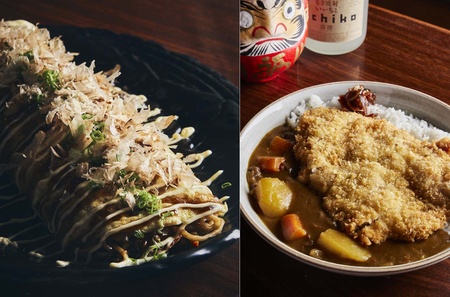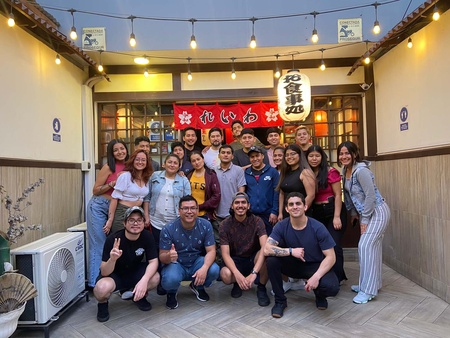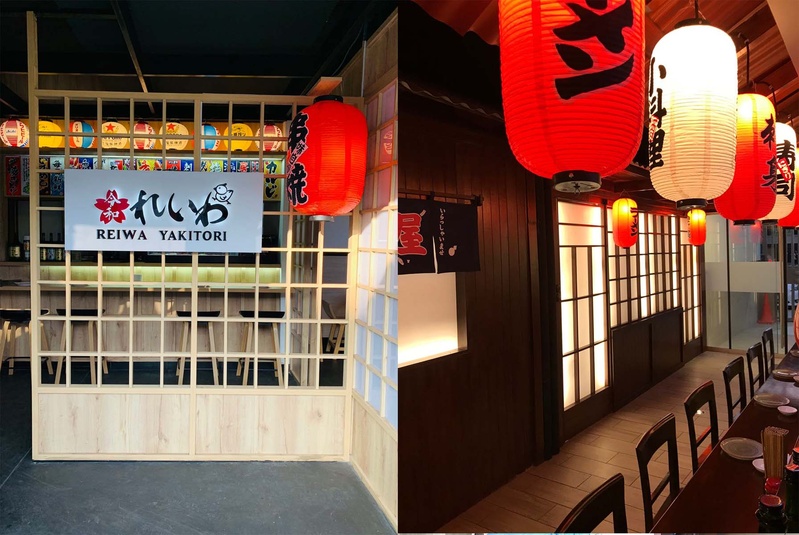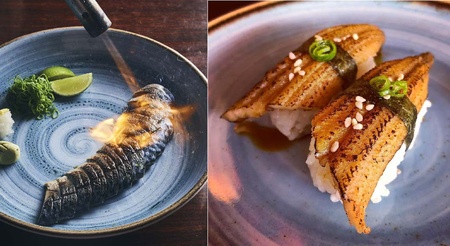Nikkei fusion has been the main way in which Peruvians have learned about the benefits of Japanese cuisine. The wide variety of local ingredients has made most restaurants opt for a combination that has conquered palates around the world. Therefore, the commitment to open a traditional Japanese bar that serves typical, quality cuisine at an affordable price seems like a challenge of great proportions.
Arturo Uchima and Julio Haruyama are the young people who created Reiwa Izakaya, the Japanese cuisine bar that officially opened in February 2020, but which has been a topic of conversation for these school friends for a long time. They say that they had not seen each other for a long time because they could hardly meet in Lima: Arturo studied cooking and went to work in France, and Julio spent a year in China, where he learned about the oriental culture of good eating.
“We really liked that,” says Julio, “that there are restaurants accessible to the entire public. I saw this concept in China because there is a lot of Japanese and Korean influence with traditional concepts that do not mix.” Arturo was in Japan where he became interested in its culinary culture in which each season has different dishes to take advantage of the ingredients at their best. “At first I wanted to go against the grain and not make cuisine that had anything to do with my origins, but I ended up becoming passionate about traditional cuisine,” says Arturo.
Comfort food
Before meeting again in Lima, in mid-2016, Julio had studied in Spain and Arturo worked in a kitchen in Panama for four years. In their conversations, two ideas came to the table: a restobar with casual service, like those they had seen in Asia, with tables on the street, snacks and drinks; and the concept of 'comfort food', which they define as a culinary proposal that becomes so attractive that it makes you want to return.
In a small place in San Borja they found the place to make their dream come true, but the pandemic took them out of their “comfort zone” and they had to reinvent themselves shortly after opening. “We work with many Japanese inputs that are sometimes in short supply,” says Arturo. “We had a month and days open with guys who had already trusted us to work with us. “We thought there was going to be a curfew for 15 days and it was extended, but we continued with the form.”
Thanks to the customers who purchased gift cards, they were able to endure those first months until the delivery service was enabled. Sales were reactivated, but both do not fail to highlight that it was the public, who gave preference to small businessmen and entrepreneurs, to the family and friends who always supported them, who were able to continue with a proposal that has in the menu close to 40 options, including hot and cold appetizers, sashimi, nigiri , makis , salads, donburis , noodles, rice, and meat and fish dishes.

The boom of networks
Each dish had to tell a story, they researched the recipes and, through the menu (which is in Spanish and Japanese), they sought to publicize Japan and its gastronomy. But it was not until a special order arrived that stirred up their social networks that the brand took off clearly. In November 2020, they received a very strange order: a customer wrote on WhatsApp requesting several dishes from the menu, but did not want to give his name. It was a large and unusual order, which caused some disbelief among the team.
“The order was delivered normally, a person came to pick it up and hours later we started receiving several notifications on our cell phones,” says Julio. The renowned chef Gastón Acurio was the mystery customer and had made a publication praising his dishes. “Japanese cuisine has a homemade version that is not easy to find in Lima. A good opportunity to try Reiwa Izakaya,” he wrote .
Acurio highlighted the katsudon , nanban don chicken donburi , udon noodle with Japanese curry, omelette stewed in dashi, among other dishes. The room began to fill. Artists and influencers arrived. “Sometimes fusion is a difficult mix to understand,” Julio and Arturo think, perhaps the key to making traditional cuisine made many people identify some dishes that would begin to become emblematic of Reiwa until leading them to open a second location.
The yakitori experience
Finding the taste of the Peruvian palate by preparing Japanese dishes should not be easy, but at Reiwa de San Borja many proposals worked so well that opening a second location did not take long. “We had been talking about it, but we hesitated to come out and in the end we did because it was important to give more presence to the brand,” says Arturo. It was a different proposal, the idea was to give more presence to yakitori in its most authentic form.

It was not just about preparing these Japanese charcoal skewers, but about replicating the service that is done in Japan: with unit prices, in which you can pay for each stick and with the iron visible in the premises. “It took us a year to find a location until in February 2023 we found one in Barranco,” says Arturo. The reviews didn't take long to arrive. The newspaper El Comercio published an article about them highlighting their “street food” proposal and some options such as chicken meatball with tare, pork belly and cherry tomatoes wrapped in bacon.
“Yakitori comes from the Japanese words ' yaki ' (roast) and ' tori ' (chicken). It is the chicken cut into small pieces and assembled in the form of skewers,” they explain in their menu . At Reiwa Yakitori there are kushi (meat and vegetable skewers), teishoku (a set of pre-selected food served in many Japanese restaurants), and plenty of options to accompany skewers and other dishes with drinks such as mugicha (barley tea), cocktails, sakes, Japanese beers and shochu (Japanese spirit).
Japanese taste
Finding Japanese taste has been a success that has led Reiwa Izakaya to participate in events such as Gochiso , the Nikkei gastronomic and cultural festival that took place from August 4 to 6 at the AELU club. For Julio Haruyama and Arturo Uchima, this experience helped them to share with clients from other areas and restaurants with whom they found great affinity. Some dishes such as takoyaki , fried balls stuffed with octopus, and gyozas (dumplings) have become more popular thanks to these events of the Peruvian Japanese community.
“We are happy to see so many people who appreciate Japanese culture,” says Arturo. Perhaps the most conservative Nikkei can find in dishes such as hiyayakko (tofu flan bathed in soy sauce) or chasu tamago (thin slices of pork with egg in the ajitsuke style) some dishes that they will hardly find in sushi bars. The dashi maki tamago (Japanese omelet), gyudon (stewed meat) or zarusoba (cold soba noodles) can be other interesting discoveries of classic Japanese cuisine at Reiwa Izakaya.
For those who love Reiwa Yakitori's skewers, tebasaki (wings), chicken heart or shiitake (Japanese mushroom) can be unique experiences. At the Barranco location you can also find dishes with salmon, Japanese curry and special ramen, such as kake udon. “Many dishes are from different prefectures of Japan, we like to promote the typical food of its different cities,” says Julio.
© 2023 Javier García Wong-Kit







